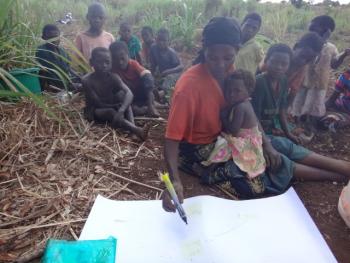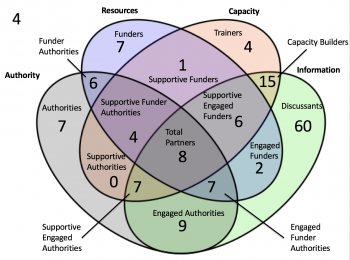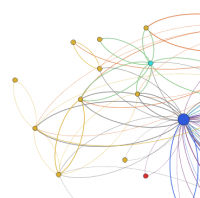This post shares an update from recent fieldwork in Malawi, and provides preliminary analysis with reference to methods and findings from previous work in Ghana.
Published on: 16/02/2016
The research I am doing seeks to understand networks of stakeholders in rural water sub-sectors, and dynamics in these environments that help stakeholders managing rural water services to improve performance.
The case study focused around two district government offices that have improved performance in their roles as rural water service authorities. The research investigated networks surrounding these stakeholders to identify dynamics that may be helping them to improve performance.

The research applied the same egocentric network mapping method piloted in Ghana. Participating stakeholders individually draw their networks and comment on dynamics they perceive as helping service delivery to improve. These data are aggregated to produce a whole network for analysis. Four network link types are included, which allows for a more detailed interpretation of relationships than is commonly available with social network analysis. The four link types are information, skill transfer, resources, and power. Analysis is further augmented by commentary from interview participants who share their views on dynamics that they perceive are supporting positive change.
Previous data from Ghana allows a comparative analysis, specifically to identify network dynamics present in both cases that are also perceived as important drivers of change by stakeholders. This post presents four identified dynamics found in all case study districts in Ghana and Malawi. This means these dynamics coincide with where positive change is happening, but they cannot be confirmed as the only causes. Your commentary on these dynamics as potential causes would be particularly helpful to the research at this stage.
Further network analytical interpretation came from constructing a typology of stakeholders as defined by how they interact with others in the network. This typology has four axes that refer to the four network link types identified in interviews. These are used to characterize the dominant expressions of organizations observed when they interact with other stakeholders. For example, a group of NGOs may be established as a specific type of organization, but behave quite differently in their actual relationships. The typology helps to capture this nuance, and further interpret the types of organizations interacting with institutions managing rural water service delivery. Referencing this stakeholder typology is important for the final point of the four preliminary findings.

These four dynamics were identified around district government water service authorities improving performance in both Ghana and Malawi:
1. Strong support to service authorities – All case study districts receive strong information and skill support from upper levels of the stakeholder management hierarchy. Some of this support comes with resources, and some is paralleled by a strong power dynamic. Not all stakeholders providing support, however, have authority over the case study districts. This variety of support may be playing an important role in helping service authorities to strengthen their skills.

2. Information brokers and skill facilitators – Some of these stakeholders without strong power relationships have additional communication and skill links, often with influence, to higher levels of government authority. These stakeholders can be described as playing facilitation roles that help new types of connections to exist in the network. These connections may be supporting systemic change in the sector where network relationships require multiple parts of a sector to change simultaneously.
3. Service authorities as local hubs – District governments are the most well connected stakeholders in their respective districts. They provide strong information feedback links and skill support with local stakeholders. These relationships may be playing important roles in helping service authorities adapt their roles in response to local issues.

4. Engagement from authorities, funders, and capacity builders – Network analysis from a stakeholder typology perspective found that all four case study districts in both Ghana and Malawi are being engaged by a group of stakeholders from upper levels of sector hierarchy. This group connects to the districts through dialogue and capacity building, and spans a range across different levels of authority and funding. Some of these stakeholders are not characterized by strong power dynamics or resource flows. This range of support from different stakeholder types may be important for helping district governments to improve as service authorities.

Research is currently proceeding in India and Bangladesh to understand networks around highly performing cases of community managed arsenic removal facilities. This will allow investigation into similarities and differences in network structures when change is occurring at a local level instead of a district one. Questions, comments, and feedback on this research continue to be appreciated.
This PhD research is through the Cambridge University Centre for Sustainable Development and an expanded description of the research is available in a previous blog.
At IRC we have strong opinions and we value honest and frank discussion, so you won't be surprised to hear that not all the opinions on this site represent our official policy.